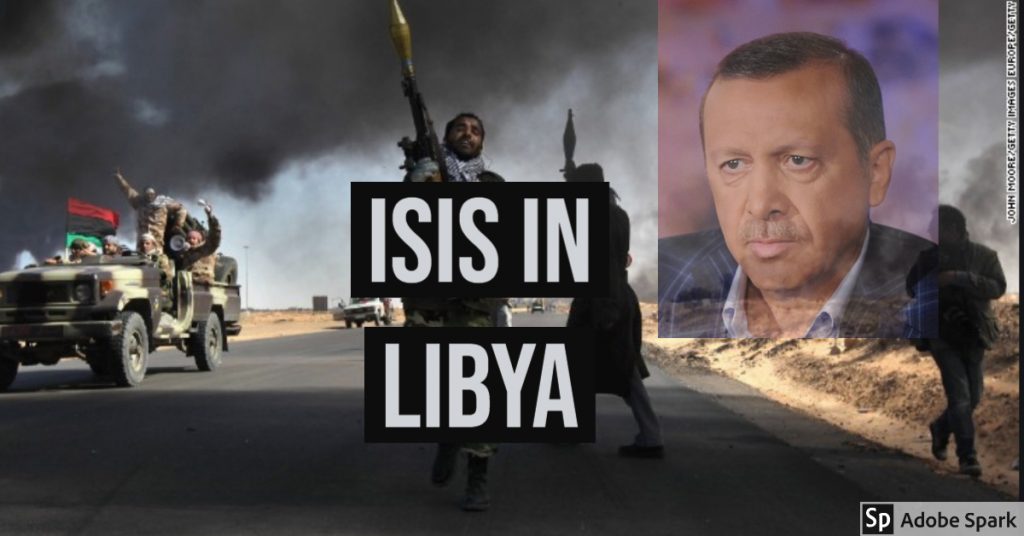By Theodore Shoebat
Turkey has transferre 2500 ISIS terrorists from Syria into Libya, according to a recent report from AlalamTV:
The opposition Syrian Observatory said that over the past few months, Turkish intelligence transferred 2,500 members of the Wahhabi “ISIS” group who hold Tunisian nationality and transferred them from Syrian soil to Libyan territory.
The opposition observatory claimed that Turkish intelligence intentionally, with orders from its government, to transfer terrorist groups and elements of “ISIS” from foreign nationalities from Syrian territory to Libyan territory over the past few months, and according to the statistics of the Syrian Observatory, Turkish intelligence transferred more than 2,500 of these The terrorist group is of Tunisian nationality towards Libya, among the thousands of people who come from Tunisia and who are with “ISIS” within the Syrian territories.
The Syrian Observatory had published a few days ago, that a new batch of militants had been sent by the Turkish government to Libya, to participate in military operations alongside the “Government of National Accord” against the “national army” led by Field Marshal Khalifa Haftar.
Turkey is a major US ally, and if Turkey is moving ISIS fighters into Libya where both the Turks and Americans are backing the Government of National Accord, then it would not be surprising if the US is also behind this transfer of terrorists. In fact, Trump and Erdogan just recently had a phone conversation agreeing on American-Turkish cooperation in Libya, as we read in Reuters:
Turkish President Tayyip Erdogan and U.S. President Donald Trump agreed in a phone call to work more closely in Libya to ensure lasting stability in the country, the Turkish presidency said on Tuesday.
Turkey supports the internationally recognised Government of National Accord in Libya, which is fighting against the eastern-based Libyan National Army, backed by the United Arab Emirates, Egypt and Russia. Ankara has previously said the United States needs to play a more active role in Libya.
What is also interesting to point out is a recent report from RT about how the areas of Syria where ISIS active are in areas controlled by the US backed Syrian Democratic Forces:
Islamic State managed to regain access to Syrian oil fields and make profits from selling oil, a new UN report reveals. While the UN did not point fingers, the IS reemergence seems to occur in areas held by the US-backed forces.
“Islamic State in Iraq and the Levant [IS, formerly ISIL/ISIS], having been defeated militarily in Iraq and most of the Syrian Arab Republic during 2017, rallied in early 2018. This was the result of a loss of momentum by forces fighting it in the east of the Syrian Arab Republic,” the recent report from the UN Security Council’s Sanctions Monitoring Team reads. The document is dated July 27, but was only released to the public this week.
The slow-down gave IS “breathing space to prepare for the next phase of its evolution into a global covert network.” As of June 2018, the terrorist group has been controlling “small pockets of territory in the Syrian Arab Republic on the Iraqi border,” effectively carrying on with its quasi-state ways.
“[IS] was able to extract and sell some oil, and to mount attacks, including across the border into Iraq,” the report stated, adding that the terrorist group regained “access to some oil fields in northeastern” Syria.
While the report did not specify which forces exactly were having troubles with “momentum,” northeastern Syria is located on the left bank of the Euphrates river, controlled by the so-called Syrian Democratic Forces (SDF) militia backed by the US-led coalition.



